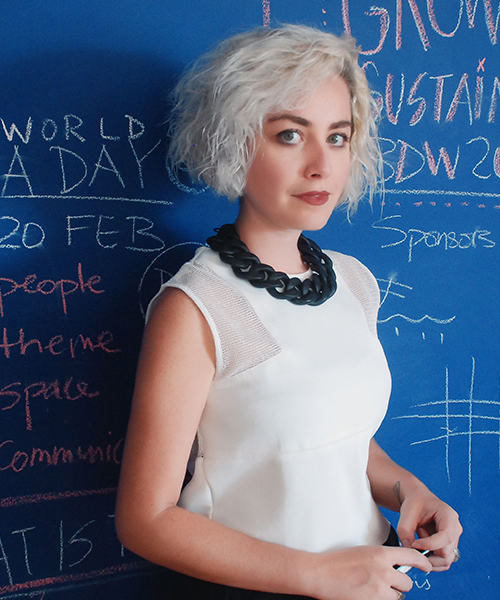doreen toutikian is the co-founder and director of beirut design week (BDW), which was initiated in 2012 alongside vrouyr joubanian. after completing her masters in european design studies at cologne, she returned to beirut in 2010 with the aim of developing its creative scene through collaborative and human-centered means to promote social innovation. this resulted in several local projects such as desmeen, BDW, and the renowned MENA design research center, where she is also president of the board and director.
during the sixth edition of beirut design week, titled is design a need?, we sat down with toutikian to discuss lebanon’s creative scene and how her challenging journey across the design field led to a vision for change.
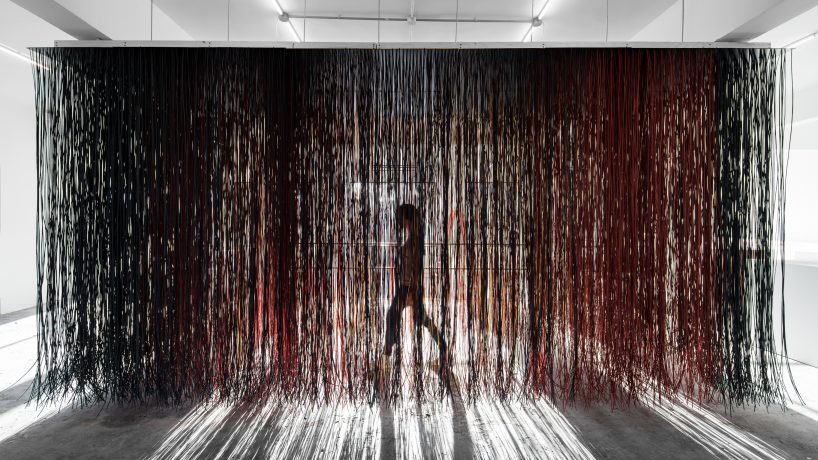
‘nationmatrix’ by architect roula salamoun and visual artist ieva saudargaité
image courtesy of the designers
designboom (DB): beirut design week has been successfully growing for the past six years — how would you compare year one to year six?
doreen toutikian (DT): it was 2012, we were basically a team of two: vrouyr and I. we were partnering with two other companies that helped us set up the organization. initially, it had a purely social cause to it: raising awareness on the value of design for social impact and education. this stemmed from a project called ‘desmeen’ which was about social and environmental challenges: how to use design to help NGOs and solve problems through a bottom up approach, how to prototype etc.. we were a small team and had no idea how much effort was required for beirut design week. there were also some restrictions regarding the whole set up: what kind of graphics to use, what the face of beirut design week would look like etc.. meanwhile, we had fifty design studios that were taking part, like nada debs, so we had to establish full credibility. by 2015, things changed quite a lot. we had a greater independence, which allowed us to become more ‘community-based’ and get closer to the people. ever since, we’ve been more free to experiment with design week. in other words, we’ve never seen it as an end result that was perfect; there was always room for improvement.
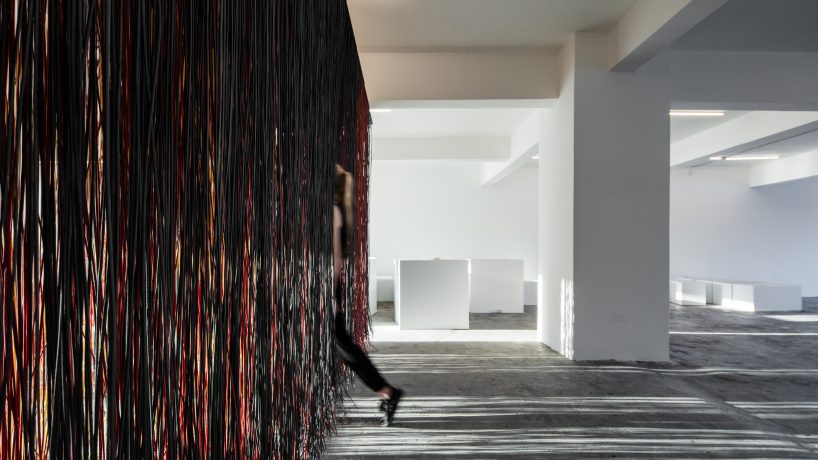
the installation is made of thousands of recycled plastic strips from lebanon
image courtesy of the designers
DT (continued): fortunately, it got more successful every year, and the way people interact with it began to change. we did not have a theme the first three years because it was mainly about understanding the concept of design. people are still adjusting to the meaning of it all. before beirut design week, nothing like this ever used to happen in lebanon – where you make a map, a trajectory and bring everyone together. the first year, though, was more about setting up a stand and selling – but now it’s actually about creatives being part of this design community and showing how they can take a theme and twist it around.
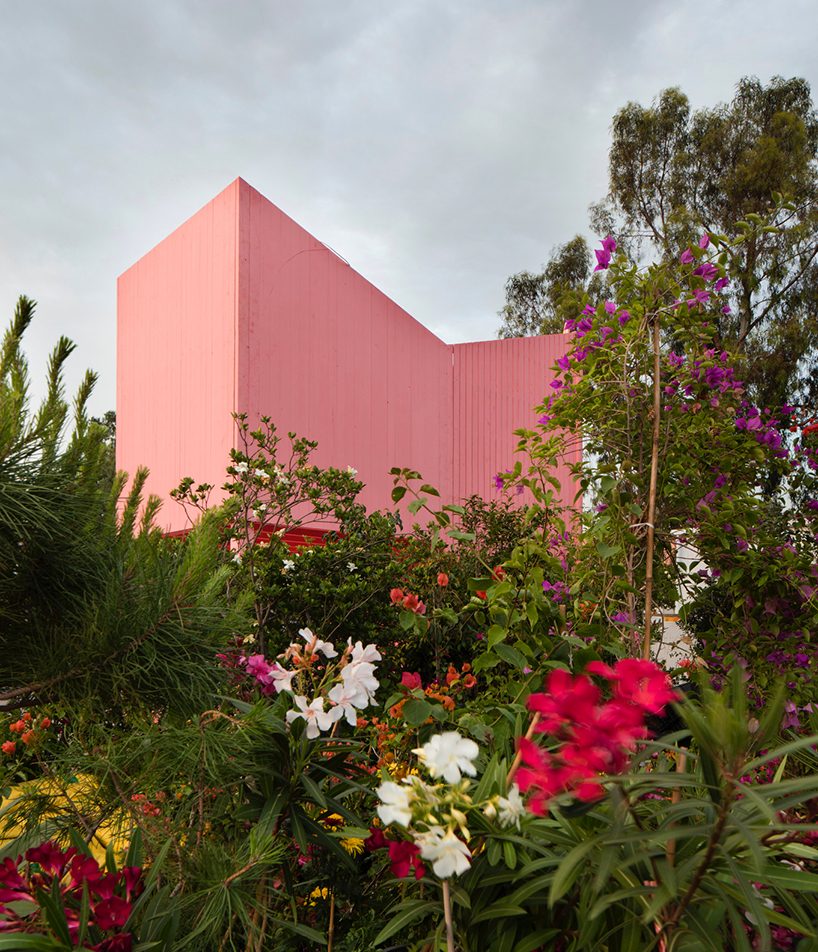
the silent room by nathalie harb is a cocoon-like pavilion that strips away the noisy urban context
image © raintree
DB: your master thesis book ‘design education in the middle east’ became a big milestone in your career. could you tell us about the story behind it?
DT: I studied graphic design in lebanon and realized very quickly that the educational system was holding me back from the things I wanted to do. I wasn’t shown any other alternatives and never thought I was capable of doing something like beirut design week. regardless, I ended up graduating in the top 1% and was offered lots of jobs even before I graduated but the 2006 war happened – and since my family is half-greek, we flew to greece. eventually, I ended up in germany and scotland. there, it was a whole new system: multi-disciplinary and trans-disciplinary. it meant I wasn’t just a graphic designer but a designer. the schools encouraged me to explore different fields, like fashion, service design, user experience, etc…gradually, I realized that the broader scope of design was working better for me. I learned a lot about research, defining certain issues and going about solving them. what that also taught me was that the end result does not necessarily have to do with my skill set as a graphic designer.
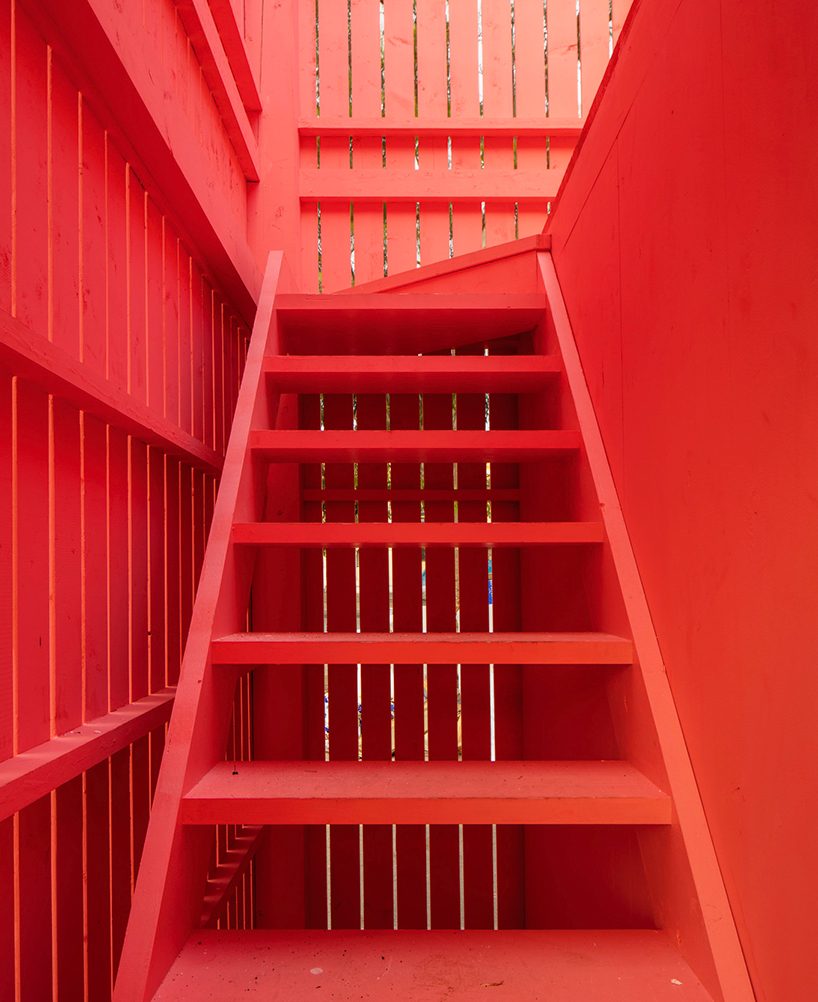
the interiors of harb’s installation is stripped from all unnecessary ornaments
image © raintree
DT (continued): when I went to glasgow, it very much revolved around social impact. I learned how design can help certain sectors, initiatives, NGOs… in that context, we were taught by sociologists, anthropologists and ethnographers – so the ‘human’ dimension was greatly present. when I returned to write my thesis in cologne, I found out I was much more interested in the social aspect of design. but it would be such a shame to use all of what I learned in a place where I felt like everything was fine — as opposed to coming back home and using those skills for something that could be really useful the lebanese. luckily I was naïve at that age and had won the design award, so I had some money and felt extremely motivated. of course, when I returned to beirut, I got ‘slapped’ in the face multiple times – but with each slap I learned a lot. to sum up, my thesis book is an overview of what’s going on here, what issues are to be dealt with and how to improve the education system of design. beirut never had a design event like this one – completely open to the public. before, it was mostly held in high-end districts where students and young creatives would feel out of place. what I love about beirut design week is that it completely broke that barrier; everybody is welcome. ultimately, you are creating a network between people, offering them a platform and the self-confidence to pursue their passion.
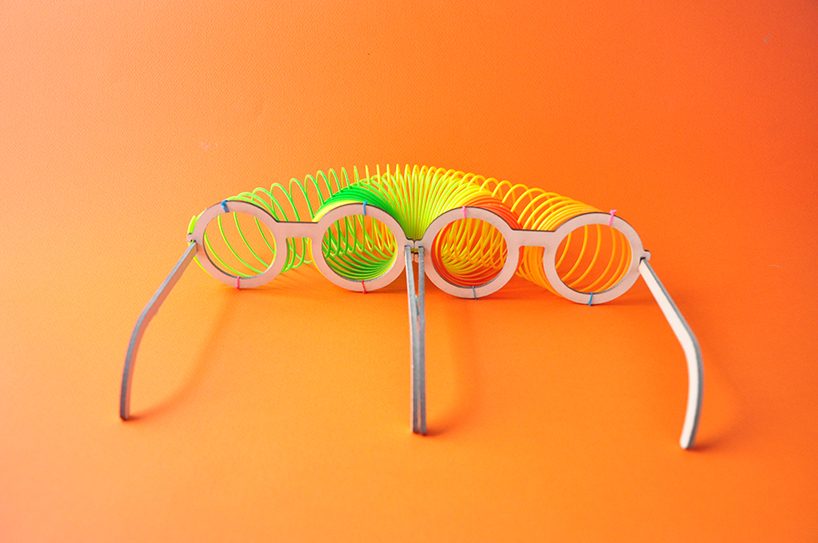
speculative needs – ‘face brace’ trains one’s eyes to recover from the antisocial effects of technology
image courtesy of MENA RDC
DB: your work focuses greatly on human-centered design, and this year’s beirut design week introduced a new level of digital culture. in your opinion, how can digitization complement this branch of design ?
DT: I think human-centered design evokes different things for different people. but in the context of beirut design week, I’ll take the example of social media impact. as you know, the team is mostly in its early twenties and thirties, so very tech-savvy. everybody is comfortable using all forms of services online. this is not the case for the already established designers, which creates a generation-gap. as proof, we created an app this year and said ‘no more paper’. all the younger people were naturally happy about it but the older ones were upset. this already shows you how the most basic thing still creates an imbalance – meaning that the digital culture is still within a very small niche of people. however, the younger audience is getting bigger and the digital talk is getting broader. one of the events this year was all about digital fabrication, 3D printing and CNC machines. we actually went to the fablab city in mkalles; it’s a four-floor factory where you can create anything using those techniques. it was great. in any case, I strongly believe that the digital layer does not take away the human interaction. in fact, we can spend much less time doing the tedious work by automating them easily through digital systems – like getting information across and making sure everything is in its right place. this gives us more time to actually take part in the pleasant conversations: talking about concepts and ideas instead of ‘did you send the files?’, ‘is this working?’ etc..
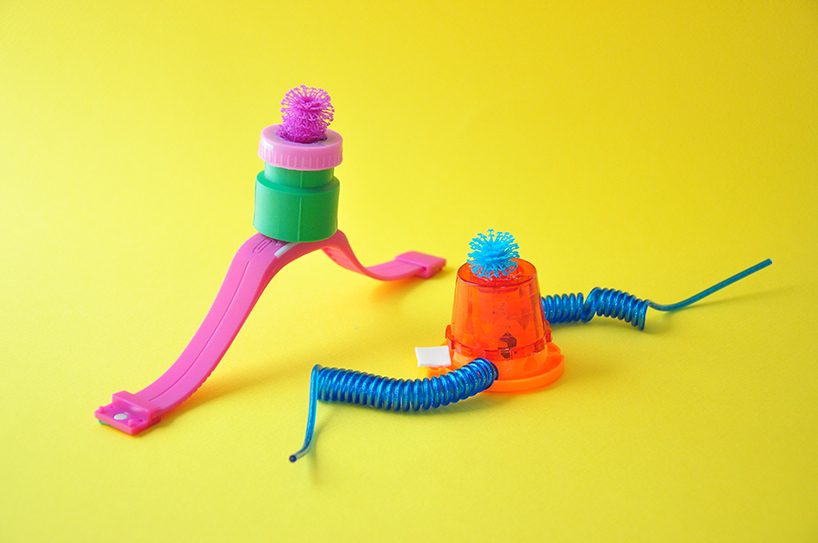
speculative needs – ‘confused prediction’ is built based on people’s behavior and activities online
image courtesy of MENA RDC
DB: many university students have taken part in this year’s exhibitions. how would you say beirut design week has impacted them?
DT: from the very beginning, it was key to keep the educational institutions in lebanon involved: this is why it is about ‘design education’ and not just design. it has been great; now we work with practically all local universities. since 2012, they started approaching us and were eager to take part in the beirut design week workshops, activities, and exhibitions. but this year in particular, we had very impressive student exhibitions at KED – like ‘speculative needs’. it really pushed them to reach a whole new conceptual level, be part of a bigger cause, of something they’ve never done before. this is the social impact I am talking about – you get to affect someone at a young age and make them understand that design is much more than what they’ve been taught by society or schools.
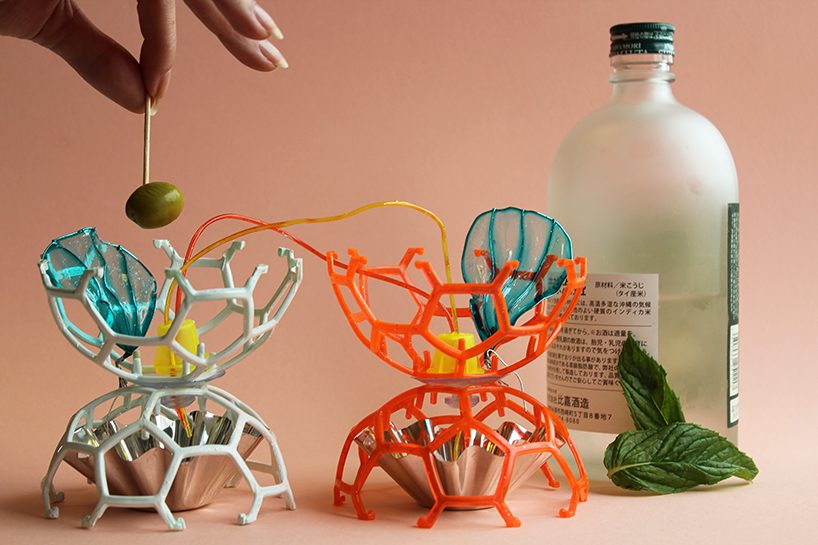
speculative needs – ‘the hormone martini’ lets you mix and create new emotions
image courtesy of MENA RDC
DB: aside from the educational system, what other sectors do you think could benefit from human-centered design?
DT: with the desmeen project, we worked with this one organization called the ‘muhanna foundation’. they are a non-profit group specialized in social security, pensions, insurance and the like. surprisingly, the founder came forward and said: ‘okay, we know what we do, how to run this business and we’ve got the numbers. but what designers can do is bring this closer to people’s heart’. I wouldn’t have phrased it that way, but it made so much sense coming from someone who wasn’t a designer. everything that is visually and mentally appealing is going to draw people closer: this is basically how advertisement works. why does BDW work? it’s not because of how great the team is, or that it’s something completely out of the ordinary. it’s because people feel like they have ownership over it, they can relate to it. with those skills, designers can really be in any sector. in the UK, you look at how the design council works so closely with the british government – and there’s a reason why they do that. they try to create a new form a language to communicate and respond to people’s needs. it’s no longer the traditional top-down approach. everything changed since social media; people expect more. we live in a generation that feels entitled to something that is really great. everything around you is way more designed than it used to be twenty years ago. but we can do so much more if we dive deep into the social dimension – by using design to understand what the problem is. the core of it all is to get young people to not be so nihilist and careless about what’s going on in lebanon. every year, we have 7 to 10 interns working with us and most of them always want to leave the country – this is something we should be working on.
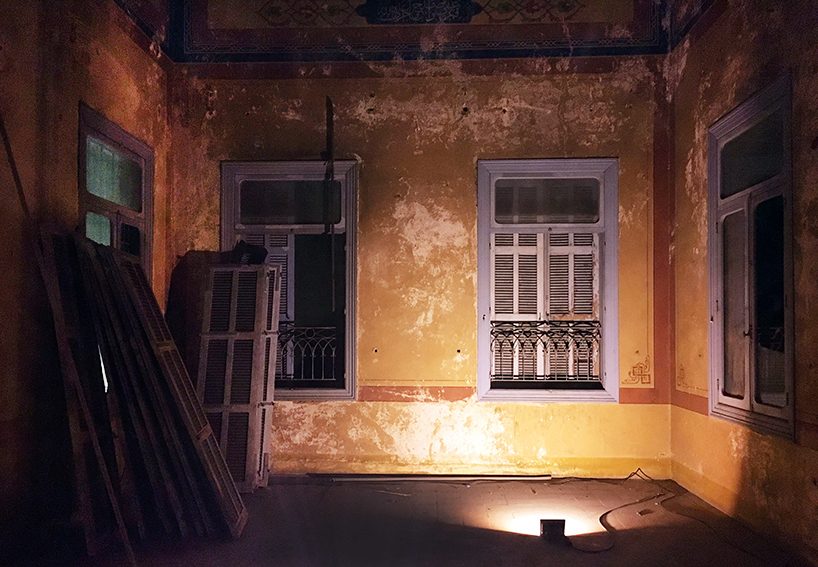
‘handle with care’ – renovation project of an ottoman house in beirut by architect annabel karim kassar
image © designboom
DB: what impact do you want to leave on the public through this year’s beirut design week theme ?
DT: I really want people to think long and hard about what design means to them. without a doubt, it is a very provocative question. for a while I told myself ‘was I really going to put this forward?’ but it did provoke people, it did create a conversation and debate – which was our purpose from the very beginning. at some point, we started noticing that everyone was a ‘designer’. what we were building as a message in 2012, started becoming a hype. suddenly, everyone is on the brand-wagon and everyone is a designer. most of them were oriented towards one perspective of design: luxury. this is fine, but it should only be a percentage of the entire design scope. on the other hand, comparing our design community to some countries of the MENA region, we have the chance to be critical / self-critical of our situation. in fact, this year’s event created tension because it would trigger questionings like: ‘I sell 50,000 $ worth of chairs and sofa, is that a need?’ nonetheless, this tension was something that we very much needed.
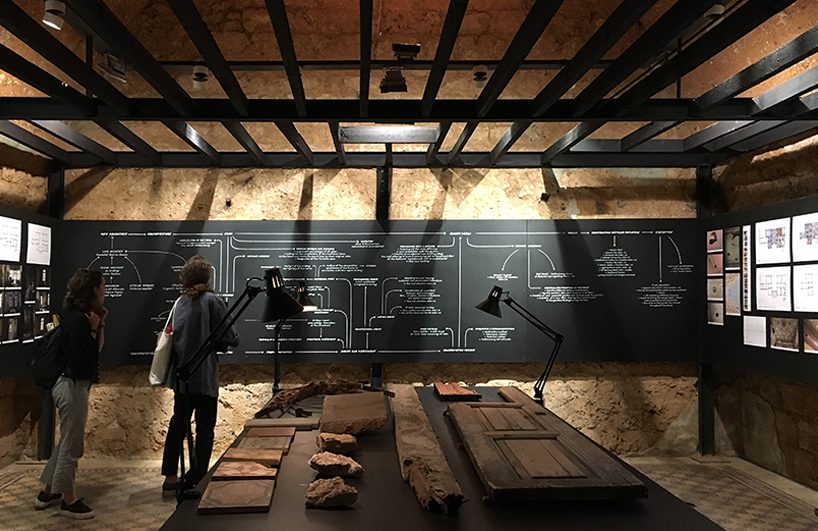
‘handle with care’ exhibition room opened at the ground floor of the ottoman house
image © designboom
DT (continued): in the end, we wanted design practitioners and the general public to know where they stand with the value they give to design and how they perceive the need. many fashion designers I knew started telling me: ‘what I do is not a need because a need is food and shelter. I cannot consider what I do as necessary’. but that also made them re-reflect and start a whole debate. in their case, would they be able to survive without expressing themselves through clothes? here comes the psychological need; wearing something you’re comfortable in, creating a fashion brand that speaks to you and so many others in a society. a lot of people would call me and say:’ how can you be asking that question? you are design week, you are supposed to have the answer!’ but it’s exactly the opposite, we don’t have it – we want them to provide us with different answers. so obviously there were the ones who were uncomfortable with the question and the ones who really liked it. this clash is intentional: we never meant to please everyone with our idea. it’s supposed to start a conversation, a tension.
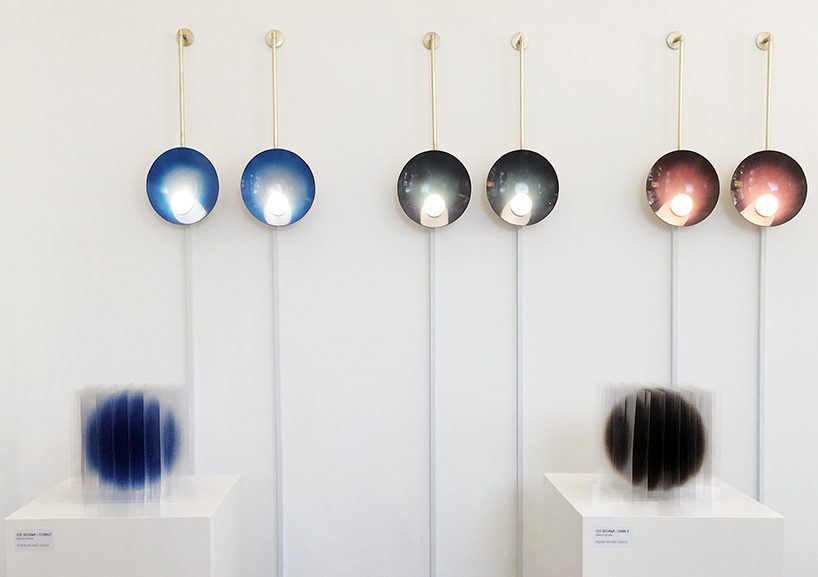
joy mardini design gallery – exhibition day at gemmayzeh, beirut
image © designboom
DB: being a successful entrepreneur, what advice would you give young lebanese creatives who want to follow that same path?
DT: patience. so much patience! (laughs). personally, I never had a mentor, someone to tell me how things go – I learned the hard way. you also have to take into account that I grew up with a mindset that does not follow the typical lebanese ‘mentality’ – and at some point, people expected me to dress and talk in a certain way. but I knew that beirut design week could only be successful if it spoke to people like me. so the advice is, definitely try to balance between what is expected of you within the community and still remaining true to yourself. many people easily lose themselves in the process, forgetting their own values. of course, amidst all that, maintain your patience because without warning, someone will get in your way and try to ruin you. the first two years, I wasn’t prepared for the criticism that I got from established designers and the press – saying ‘ who does she think she is?’what I’m trying to say is that you need to be really tough to do something like this. little by little, you try to make logical sense of it all and not take things personally.
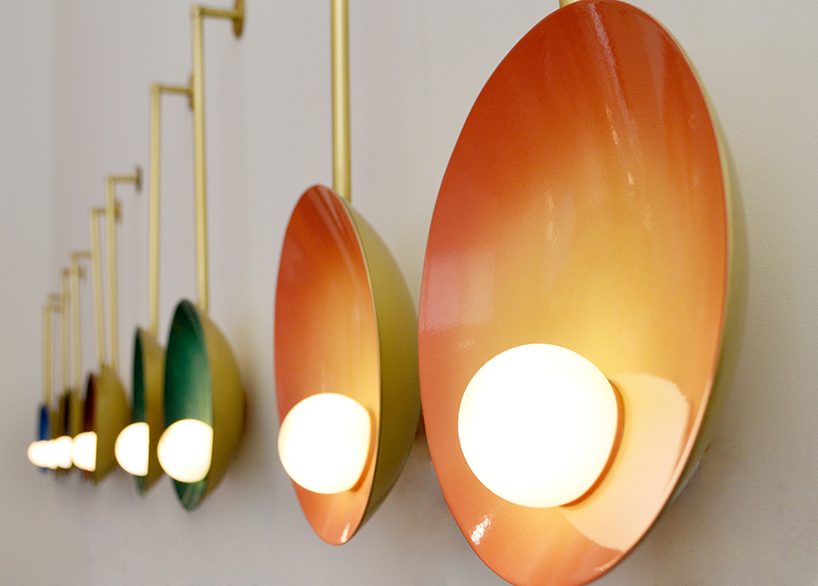
close up view of the oyster lights by carla baz
image courtesy of joy mardini design gallery
DB: what is the next step for beirut design week?
DT: what I am really interested in doing next is focus more on the MENA region. three or four years ago, I didn’t know much about our neighbors, so I started traveling to egypt, morocco, tunisia etc. and came to realize that there could be something so special that we haven’t tapped into yet. we need to start collaborating and drawing creativity from one another. lebanese designers are too focused on what’s going on outside of their region – but we’ve already got those skills. what if we can start forming a new language which was more about the arab world, where we get to travel and explore those different cultures nearby? you go to a souks in marrakesh or tunis, there’s so much going on – it’s exciting. a couple of months ago, I attended a workshop in rome and I met with palestinians, syrians, jordanians etc., ultimately realizing how ignorant we are about the wealth of knowledge that came from their cultures. I think we should build better links with the countries that are next to us and I want beirut to be a safe place for them to have a conversation. I want the city to regain its cultural hub.
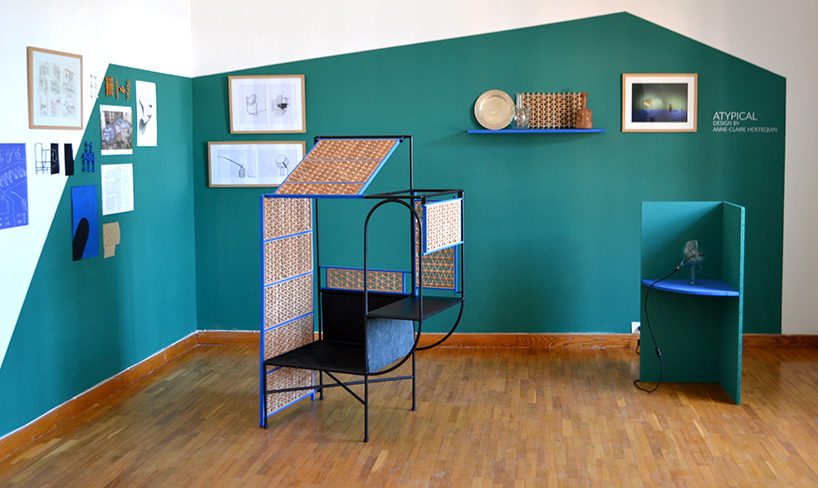
installation by anne-claire hostequin at the ‘render design residency’ exhibition in beirut
image courtesy of joy mardini design gallery
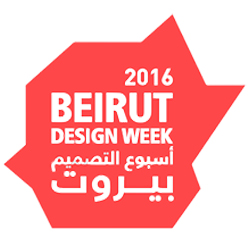
beirut design week has returned for its sixth edition, with a provocative theme titled ‘is design a need?’ established in 2012 by doreen toutikian and vrouyr joubanian, it has attracted more than 25,000 visitors and hosted over 150 events across the city of beirut. despite its political instability, beirut has continously proven to be the ‘design capital’ of the arab world, providing an enriching and sustained cultural platform each year. from architecture to product, lighting, fashion, furniture, tech, and graphic design, over fifty creatives from the MENA region, europe and U.S are annually invited to showcase their works. these are strategically dispersed across the city to highlight each neighborhood for a day – such as downtown beirut, mar mikhael, achrafieh, hamra, gemmayzeh, bourj hammoud etc.. a series of events take place in each — including workshops, film screenings, open studios, exhibitions, conferences, debates and lectures. BDW is organized by the MENA design research center, a non-profit initiative which aims at developing the understanding of design in the region – through extensive research methods and multidisciplinary projects. this year’s opening event took place at the arts & entertainment center KED, located on the seaside district of beirut – called karantina.
Save
happening this week! holcim, global leader in innovative and sustainable building solutions, enables greener cities, smarter infrastructure and improving living standards around the world.
PRODUCT LIBRARY
a diverse digital database that acts as a valuable guide in gaining insight and information about a product directly from the manufacturer, and serves as a rich reference point in developing a project or scheme.
